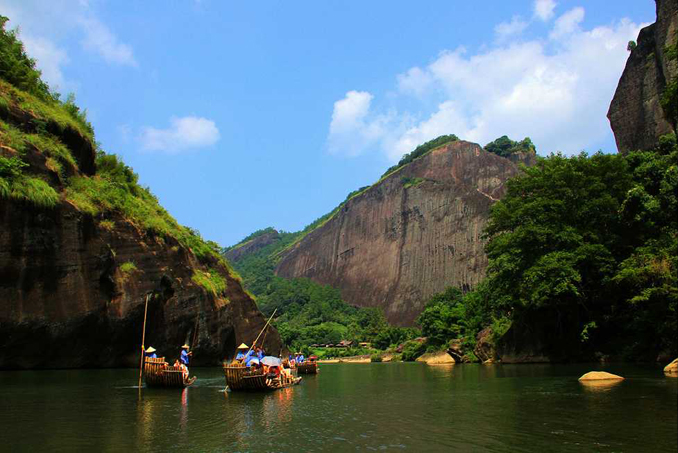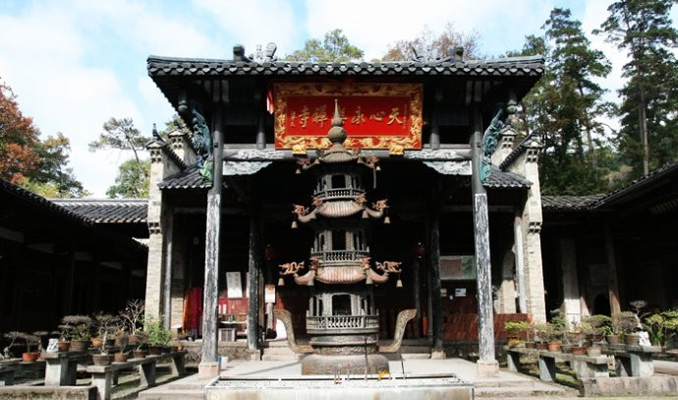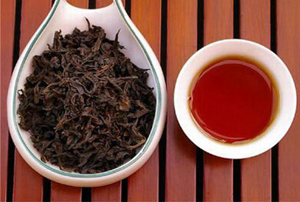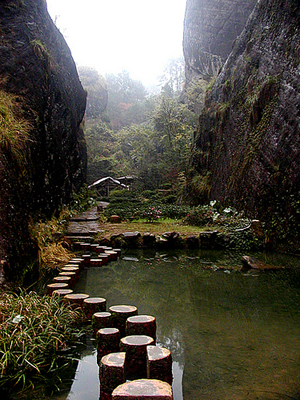Written by: Feng Yang
Posted on: September 30, 2014 | 
Mount Wuyi, china
In the north of Fujian Province, southeast China, Mount Wuyi is just 650 meters above sea level. This mountain is not very imposing and magnificent, but it is famous for a beautiful landscape, a long history and a glorious culture.
If nature is compared to a painting, Mount Wuyi can then be regarded as the painter's masterpiece of watercolor. It took the painter, so to speak, several hundred million years to paint the background of red sandstone topography, arrange 36 peaks in different postures, cover them with trees and grass and bring in a winding stream like a jade ribbon to connect the peaks. When clouds and fog are evaporating among the green water and red sandstone mountain, when rare birds and butterflies are dancing in the tea groves in the sunshine, and when insects with a history of hundreds of millions of years are chirping, this painting becomes alive and presents to the world the miracle of nature.
Tourists or hermits who come to Mount Wuyi today, like the ancient Min ethnic people several thousand years ago or like famous geographer and traveller Xu Xiake several hundred years ago, may take a plain bamboo raft to float down the Nine-Twists Stream (or the Nine Bend River) into this beautiful landscape painting, into what Taoists perceive as the dwellings of immortals.
 |
Going down Nine-Bend River by boat |
Looking up, one can once in a while see coffins high up in the caves or crevice of the cliff by side of the stream. They are tombs of people from the ancient Min ethnic group in the Neolithic Age. The coffins resemble the shape of a boat and some even have oars. One of them is almost 4,000 years old and is the world's oldest coffin preserved to this day.
Why was a coffin made in the shape of a boat? Legend says that these coffins would be used as boats by gods to bring the souls of the dead to the paradise, and those planks, called "rainbow plank bridge", were planks used by the God of Mount Wuyi to make a bridge to the paradise when he invited his neighbors in the mountain to a feast in Heaven.
 |
Ancient coffins suspended along the cliff sides |
How did the ancient Min raise the coffins 40 meters up the cliff and put them in the caves or crevices?We cannot find answers to this question in the boat-shaped coffins and planks, which are just witnesses to a long lost civilization. Not far away from the mountain are the ruins of an ancient city built in the first century, which demonstrates the glory of the civilization of the Minyue Ethnic Group, who were descendants of the ancient Min ethnic group. Although the palaces, towers and pavilions in the city have long gone and so have the residences of the kings and his aristocrats, we can still find the traces of the past glory of the city.
Mount Wuyi and its waters are miraculous. The coming of Taoism in the 8th century has shrouded the mountain and waters in the ambience of a fairyland. Mount Wuyi is respected in Taoism as a dwelling place of immortals. As a result, many places in the mountain are named with the word xian, meaning immortal, such as Xianyiting (Pavilion for Immortals to Play Chess), Yanxiantan (Alar for Immortals to Feast), Xianyouyan (Rock Once Toured by Immortals), Xianrenchuang (Bed for Immortals) and so on.
 |
Tianxin Yongle temple |
The mountain has a long history of Buddhism as well. Buddhism was introduced here in the 8th century and was to enjoy a long period of boom after the 1lth century. The Temple of Tianxin Yongle, literally the Temple of Eternal Happiness, has a history of about 1,000 years and still attracts many believers today.
Mount Wuyi is also the cradle of what is known in the West as neo-Confucianism, which was developed on the basis of traditional Confucianism. This school of Confucianism or Confucian philosophy was the orthodox philosophy authorized by the imperial authorities in various dynasties from the 13th to the 20th century. It had a great impact on every aspect of Chinese social life. Its influence had also reached South Asia and Southeast Asia and it was reputed as the "representative of South Asian Civilization." Zhu Xi, founder of the philosophy, came to study in Mount Wuyi at the age of 14, and he stayed there for more than 50 years, writing books, establishing his own school of thought and giving lectures. He established the Ziyang Academy of Classic Learning and Kaoting Academy of Classic Learning. Many of his students became renowned scholars, who disseminated and developed the Confucian school of idealist philosophy.
Confucianism scholars, Buddhist and Taoist monks co-existed peacefully in this mountain. We could have imagined a scene of a peaceful evening, when, under the same moon, Taoist monks would be making pills of immortality on their stoves while Buddhist monks would be reciting Buddhist scriptures, and at the same time, Confucian scholars would be pacing the mountain trails thinking about some complicated problems of life.
 |
Dahong Pao Yancha tea from Mount Wuhi |
Along the line of 27 degree northern latitude, most places in the world are desert with very few plants. Mount Wuyi is the only place on the same latitude with a stretch of well reserved subtropical virgin forest, making it a natural shelter for wildlife. The entire mountain has a total of 3,728 plant species and 5,110 animal species, including such rare species as South China tiger, leopard, tufted deer and yellow bellied tragopan. This mountain also has rich insect life, with 4,635 species. It has as many as more than 200 different types of butterflies. The beautiful teinopalpus aureus is one of the most valuable butterflies in the world. Now there are only 12 specimens all over the world and 11 of them are from Mount Wuyi.
 |
Dahongpao tea farm |
Of all the plants, Wuyi Yancha tea is the most famous. As early as in the Song Dynasty (960-1279), Wuyi Yancha tea had already become an article of tribute to the imperial court, which had established an imperial tea garden in Mount Wuyi to supervise the making of the tribute tea. Starting from the 17th century, Yancha tea began to be sold to Europe and the Americas.
The best type of Yancha tea is called Dahongpao (Big Red Gown). In early spring, when tea trees just sprout, the trees are red all over as if they are wearing a big red gown when looked at from afar, giving the tea its unique name. The only four tea trees of this kind left are more than 300 years old, and their production output is very limited. As a result, the limited tea the four trees’ produce is considered very precious. To date, there is no conclusion as to when Wuyi Yancha tea has started to be planted in the mountain. But it doesn't matter. As famous Tang Dynasty poet Fan Zhongyan did, we may believe that the tea was first planted by fairies in Mount Wuyi. In addition, a unique tea etiquette has been established over the past 1,000 years. The local people have developed 27 different formalities in their tea drinking ceremony, which speaks volumes for the aesthetic taste of the ancient Chinese.
Mount Wuyi was listed as a site of world cultural and natural heritage in December 1996.
You may also like: